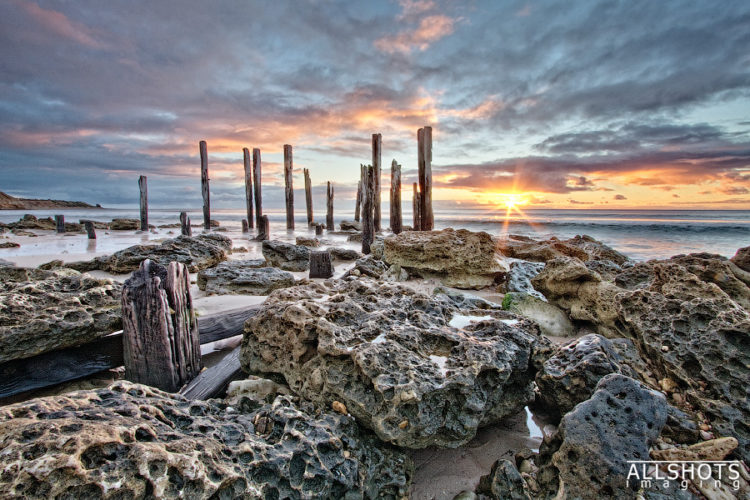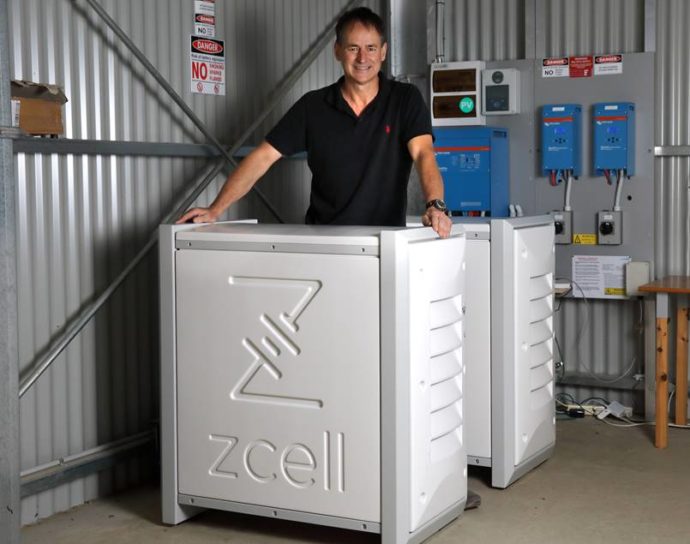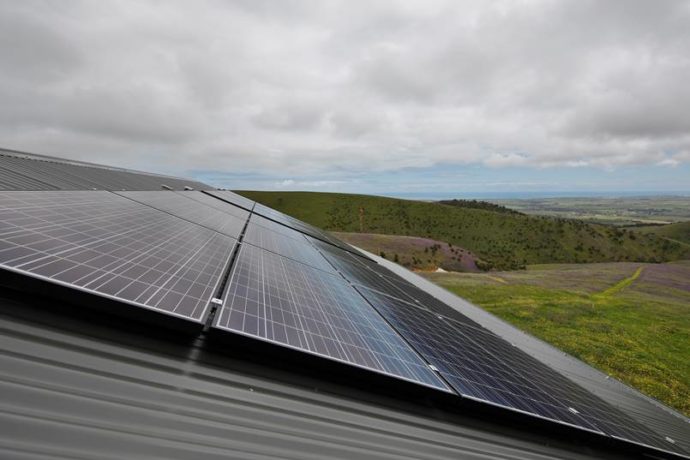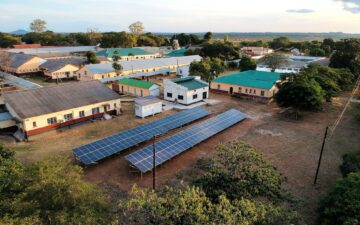
If you own a 100 Hectare property (let’s just pretend) – so large that mains power is available only in one corner of it – you face a choice between putting up ‘telegraph poles’ which spoil the view and cost a fortune, or installing some serious off-grid power kit just where it’s needed.
Alan Noble knows a bit about technology – he’s Google’s chief engineer for Australia and New Zealand. He’s also the lucky owner of a 100 hectare plot in Willunga, near Adelaide, South Australia on which he will be building a ranch over the next two years. If you live out in the sticks in an area prone to bush-fires you need to be self reliant, prepared to fight a fire yourself. It’s the policy of the grid-power provider in that region to cut power on days when the risk of a bush fire is high – yet if you rely on grid electricity, and it gets cut, how will you pump fire-fighting water, or operate the sprinkler system? For that Reason alone Alan Noble would have chosen to go off-grid.

Bushfire
(photo credit: bertknot)
Phil Crotty, Victron’s Sales Manager brings our attention to the interesting solution to Alan Noble’s needs:
The installation was undertaken by Off-Grid Energy Australia whose Energy Storage consultant, Mark Constable, chose Zinc Bromide flow batteries for energy storage. Essentially these batteries are zinc-plating machines; during the charge-phase bromide is caused to flow over thin plastic sheets plating them with zinc, during discharge the zinc is reabsorbed. 100% cycling is possible with no loss of performance. Yet even that wasn’t the biggest attraction in this installation:
The primary reason for this choice is that the temperature in the installation shed often rises to over 50°C – which could lead to thermal runaway if Lithium Batteries, for example, had been installed. The two Redflow ZCell batteries chosen are each capable of delivering 10kWh of stored energy per day; they have a long service life (expected to be in excess of 10 years); can be hibernated – even withstanding extended periods at 0% SOC …then recharged straight from PV panels back to 100% with no loss of performance; and bromide is itself a fire-retardant, making this form of energy storage particularly safe. (You may remember we hosted a guest blog from Redflow’s Simon Hackett last August.)
This is not the first time Victron inverters have been paired with Zinc Bromide batteries and their successful track record was the reason Mark Constable chose the Multiplus 48/5000/70-100. Alan Noble acknowledges Victron’s investment in their products, constantly working to ensure compatibility with new technology, and he’s pleased with the inverter at the heart of his system. When his ranch is built and power demand is higher he will be adding a second identical inverter.
To complete the pictur: a 6.24 kW PV array is wired to two Blue Solar MPPT 150/70 and a Color Control GX – Mr Noble being particularly keen on the facility to remotely program/monitor his system.
The cost of domestic-sized Zinc Bromide flow batteries doesn’t come cheap being higher than equivalent Lithium batteries – but it’s a new technology and costs are expected to fall sharply as the product is taken-up. Alan Noble sites rising electricity costs as a justification for the $40,000A price-tag of his long-lived 20kWh battery storage system; ‘in the long term it’s going to be worth it’.
He’s right. Today, in times of global low-inflation we see energy companies announcing double-figure percentage price hikes – in the UK (from where I write) the seven major energy suppliers have recently announced price increases of as much as 15%. They blame wholesale prices of electricity which they say have risen by 36% in the last year.
Time for householders to consider their own energy security, perhaps?
The first test of Google’s Engineer’s installation came unexpectedly early – on 28th September last year, after a severe storm, which wiped out electrical supply to the 1.7 million customers in the South Australia Power region, Mr Noble’s property was unaffected.
The Headline Photo is an image of Port Willunga Jetty and Rocks by Marek who generously makes it freely available on Creative Commons. It has not been altered – all blending is by the owner. Thanks Marek.




















 #victronenergy #adventure
#victronenergy #adventure
 ELECTRICS
ELECTRICS 
